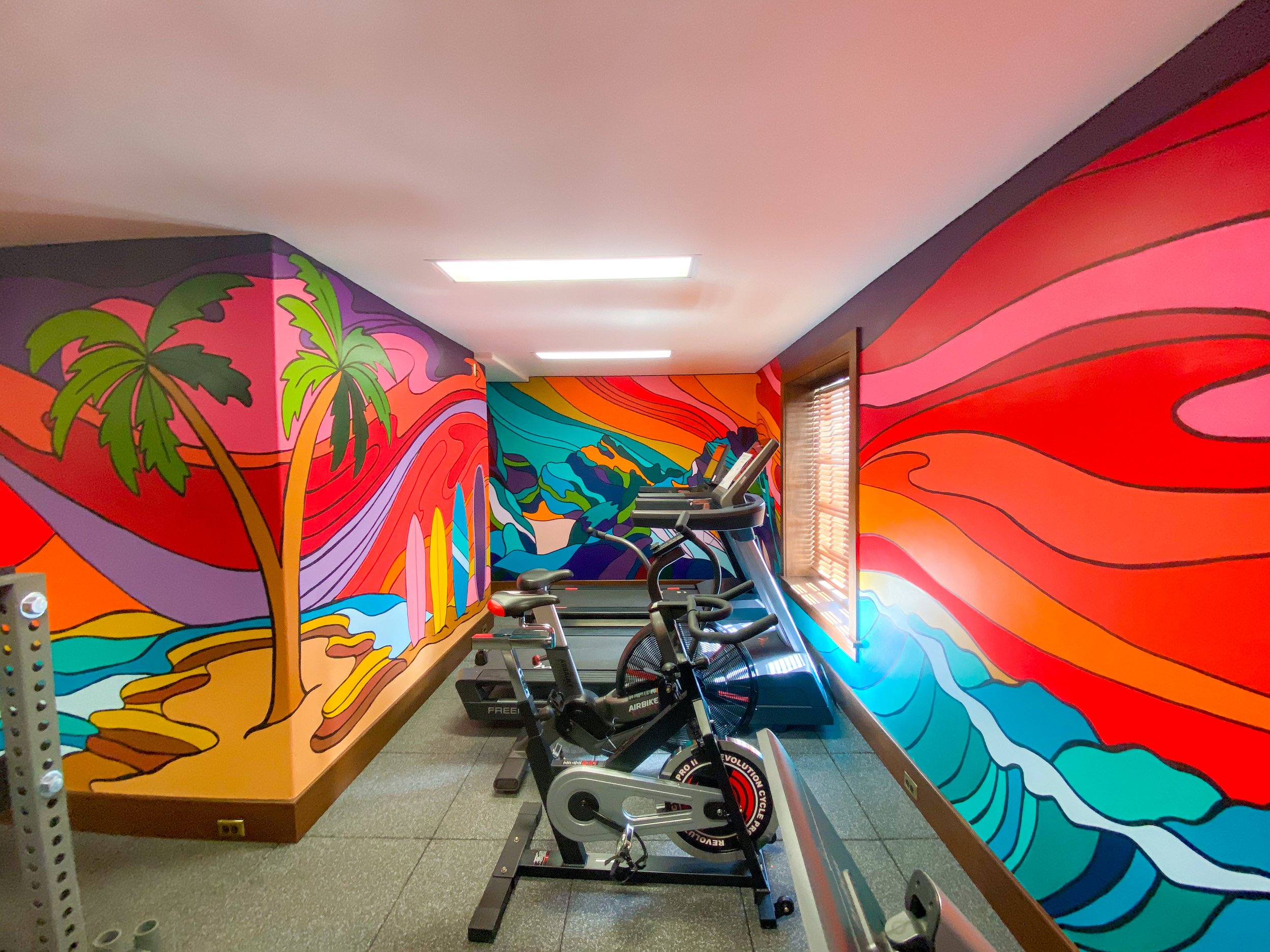MURAL TIP #3 | What Paint Should You Use?
Is there a perfect mural paint I’m supposed to be using? Will I look like an amateur if I don’t use the correct paint. Who do I even ask?? I wondered all this at the beginning too.
Not to worry! Let’s chat about PAINT! By the way, if you’d rather not read this and just get a list of my supplies, I made an Amazon list HERE. Click that link to easy grab my utensils, paint, etc.
Paint for Indoor Projects
Paint comes in many shapes, sizes, and types, but the simplest method is to use good ol’ indoor house paint for your murals.
To expand on that, you need to figure out if you need to prime the wall (basically a paint that will help the paint stick to the wall). If there is already some nice and smooth house paint on the walls, most likely priming is not necessary. I hardly need to prime any of my projects inside. You will need to prime if you are painting on a weird material, like a garage door interior, or something plastic, or wood, you catchin’ my drift?
TIP: Ask the paint guy or gal what they suggest! I am already aware that I don’t know everything about paint, so I love asking the paint store what they think. I learn a new thing every single time! But make sure to do a lil research on your own, too.
My favorite paint is Nova. Not quite a household name like the typical hardware store brands, but SUCH amazing paint. The paint comes in true artist colors (like burnt sienna & cobalt blue) and they also have awesome fluorescents! One thing to be aware of is that since they are true artists paints, they come in opaque, transparent, and translucent colors, which is something to be aware of if you need all opaque colors (though they can all become opaque by mixing and/or multiple coats.)
The mural below is one that I did entirely with Nova Paints. If you’re interested in ordering them (I love buying the quarts with screw-on lids!) you can shop through THIS LINK to get 10% off your first order!
My second fave interior paint is Sherwin Williams paint. Their samples come with a screw-off lid (amazing) and when painting a mural, you usually don’t need much of each color anyways - although definitely consider if you should purchase the real stuff over the sample (they have different binding properties that make them better paint.) Occasionally I’ll do projects using the samples (like in my own house) because I’ve had a wonderful experience with them, but the longevity and colorfastness of the real stuff are superior in the long run.
For small areas of murals when I don’t want to buy an entire quart, I will often use an acrylic marker, use a sample color, or mix colors to create the color I need. Plus, as you do more and more projects, you’ll gather more paint and begin to be able to re-use some of it.
And a quick note on acrylic paint from a tube (like that you’d use for a painting on canvas or paper) those are much pricier in small quantities and wouldn’t really be practical. Like anything you’re learning though, try out different paints and new methods to see what works. You’ll make mistakes and fun discoveries, it’s just how it goes!
By the way, if you want more of an in-depth lesson on painting murals, I have an entire course you can take today right HERE.
Painting Outdoor Projects
Outdoor projects aren’t quite as straightforward as interior projects, but that doesn’t mean you should be scared of them.
When starting a project outside, it’s important to note a few things that will impact your wall and your paint like the weather, humidity, sun exposure, and age of the wall.
For the sake of this blog, we’ll assume the wall is in good condition (if it isn’t, look into specific wall prep and sealant for the surface you’re painting.) Usually, outdoor walls are more textured than interior, so you’ll want to think about using a thicker roller, bigger brushes, or maybe even spray paint instead. Often, you can buy exterior acrylic paint for painting your entire mural, and just like you would paint a house, you don’t even have to apply any type of sealant.
Note that there are many different ways that people go about doing exterior murals, so there isn’t one rule to follow, but just know that it’s possible and not as difficult as you might think! Plus, if you do exterior walls, more people can walk past and enjoy them, which is totally a win-win!
Like I mentioned, if you are unsure of anything else mural-related, I created this mural course just for you - grab it HERE.
![Haley [Badenhop] Leeper Art + Murals](http://images.squarespace-cdn.com/content/v1/5e0fae87f806fb45852bf868/816f25c5-e94c-4720-8512-41b0bb640871/Haley-BADENHOP-leeper-Logo+3.png?format=1500w)


